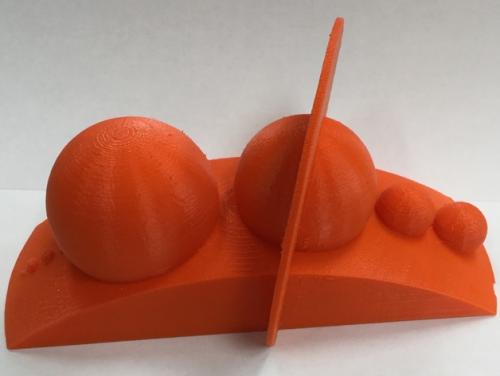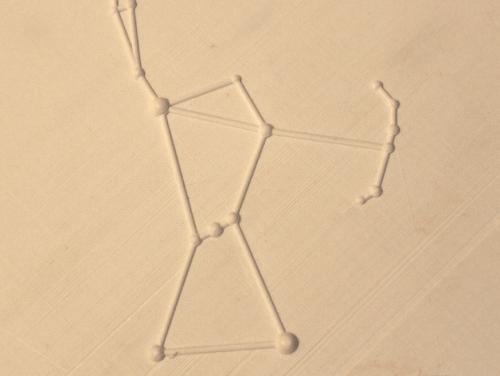|
|
Science Education with 3D Print
Current models available for the 3D printer:
Current available 3D models have been selected from the "Thingiverse" website. The links that refer with the appropriate Thingiverse model is reachable by selecting the image in the table below.
The CESAR Team is developing new 3D models, which will be made available when they are completed.
|
Mars
Globe
(Surface x20)
|
 |
The planet Mars is the often called as "The Red Planet" due to the iron oxide on its surface. It is the fourth
in distance to the Sun and the second smallest in the Solar System, after Mercury. The planet has a very thin atmosphere, what makes very difficult to land on it, and its surface is full of volcanoes.
This Mars Globe 3D model, developed from the data collected by the NASA Mars Global Surveyor Laser Altimeter, reproduces the Tharsis region. The height of the mountains has been expanded by 20 times but the distribution of the valleys has its real size. The main volcano, at the left side of the picture, is called
the Olympus Mons and the smaller ones at the right side are, from north to south, Arsian Mons, Pavonis Mons and Ascraeus Mons. At the bottom right side, there is also visible the distribution of the Valle Marineras.
|
Gale Crater
|
 |
The Gale Crater is one of the most fascinating Mars' craters due to its interesting distribution. It has a diameter of 154 kilometers and a mountain, called the Aeolis mountain, in its center of 5 km high. This
region, discovered by an amateur astronomer from Australia, Walter F. Gale, has been studied by the NASA Curiosity Mission and from this data this 3D model was designed, with a scale of 1:2 million.
The crater seems to have been originated from the impact of a meteor, in the early Mars history.
|
Scaled Solar System
|
 |
The Solar System is the system gravitanionally-bounded to the Sun. The Sun is a normal star with a mass of xx and an age of less than 5.000 million of years. From the theoretical models, it is considered that the Sun is at half of its life.
In the Solar System there are eight planets (Mercury, Venus, Earth, Mars, Jupiter, Saturn, Uranus and Neptune) and thousands of other bodies, such as moon, asteroids, comets, meteroids and minor planets that travel around it. Pluto was considered by the International Astronomical Union, in 2006, not anymore a planet but a minor planet.
The four planets closer to the Sun (Mercury, Venus, Earth and Mars) receive the name of solid planets, meanwhile the rest (Jupiter, Saturn, Uranus and Neptune) receive the name of giant gaseous, for their composition.
|
Orion Constellation
|
 |
The Orion Constellation is a winter constellation for the North Hemisphere. Constellations are not gravitationally-bounded objects but receive its name for their distribution on a 2D map of the Sky. This constellation represents an archer and it was used in the xx to test the vision of the archers.
The three stars in the center, called the Orion belt, are on top of the Orion Nebulae, ..
|
|
|
|